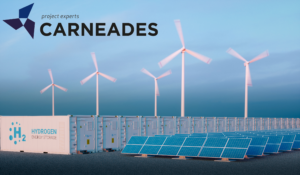Market insights: Germany’s National Hydrogen Strategy close to the finishing line

Hydrogen is considered a key element for the energy supply and a decarbonization strategy. Its field of use is versatile: hydrogen can serve as an energy carrier, an energy storage medium, for the sector coupling and as an essential resource within chemical and industrial processes. With its “Nationale Wasserstoffstrategie” (national hydrogen strategy or NWS), which was expected to be released last year, but whose release is still pending, Germany intents to enable the full potential of hydrogen and accelerate the technological ramp-up within a coherent framework.
The current draft of the NWS (version April 2020 to which the following statements refer) gives a clearer picture of the future direction and funding, so that the market is eagerly awaiting its final publication.
Firstly, the draft lists already existing funding projects and funds such as the national innovation program for hydrogen and fuel cell technology (also called NIP) or the real laboratories. Moreover, it also envisages a new funding pot of 1 billion euro as part of Germany’s decarbonization strategy for investments in technologies and large-scale facilities from 2020 until 2023.
With limited capacities for generating renewable energy in Germany, the NWS concludes that Germany will remain an energy importer despite the planned investments. Hence the report concludes that international cooperations and partnerships need to be established, intensified and strengthened.
Talking in capacity figures, the current NWS draft defines a capacity target of 3 to 5 GW for electrolysis in Germany by 2030. To even further increase the capacity for electrolysis, Germany is seeking to create a regulatory framework for offshore wind energy with the countries bordering the North and Baltic Seas in order to create an additional capacity of 5 GW in Germany.
Moreover, the NWS contains a description of fields of action, future markets and an action plan. The action plan is specified for
-
- the production of hydrogen
- its application areas
- its infrastructure and supply
- education on hydrogen
- further R&D and innovation
- the intensification of cooperations and driving hydrogen in the European market
In order to monitor the implementation and to further develop the NWS, a committee of state secretaries for hydrogen will be set up. The committee will be supported by a newly established national hydrogen council of 15 experts and a new control center. A completely new governance is introduced with the NWS to coordinate all activities. A central instrument of this organizational governance will be an annual hydrogen report, which will be supplemented by an extend report every three years. These reports serve as a basis for the hydrogen action and decision processes.
Concluding, the NWS is close to the finish line. After crossing the finish line, the final NWS version has to be evaluated in order to initiated or continue the implementation of hydrogen projects with a new momentum and in a newly established more coherent framework.

